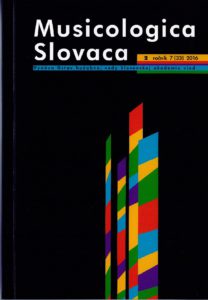Klavír v živote a tvorbe Viliama Figuša-Bystrého
Piano in the Life and Work of Viliam Figuš-Bystrý
Author(s): Marianna BárdyováSubject(s): Music, Local History / Microhistory, History of Art
Published by: SAV - Slovenská akadémia vied - Ústav hudobnej vedy Slovenskej akadémie vied
Keywords: Viliam Figuš-Bystrý; piano; music events; composition for piano; symbolism; Secession;
Summary/Abstract: The piano had an important status in the life and music of Viliam Figuš-Bystrý (1875–1937). The instrument accompanied him all through his life, and almost every day he played for enjoyment and for purposes of study and composition. In the places where he held professional positions, besides performing as choirmaster and conductor he also accompanied singers and instrumentalists. He also played as a member of the chamber groupings which he himself formed and for which he adapted works principally from the repertoire of European classicism and romanticism. In the conformation of his work there are also compositions for piano – dances, compositions for children and youth, and the Sonata in the Doric Scale, op. 103. His repertoire and his own compositions complement our findings on the technical and expressive maturity of Figuš as a performer, and also as a composer who took the compositional resources of late romanticism and expressionism as his starting-point, but relocated them in the style of musical symbolism and the Secession. Figuš’s piano work, extant programmes of events, and his personal diary round off the hitherto-received picture of the composer and of the musical taste and production of his time.
Journal: Musicologica Slovaca
- Issue Year: 6/2015
- Issue No: 2
- Page Range: 266-291
- Page Count: 26
- Language: Slovak

